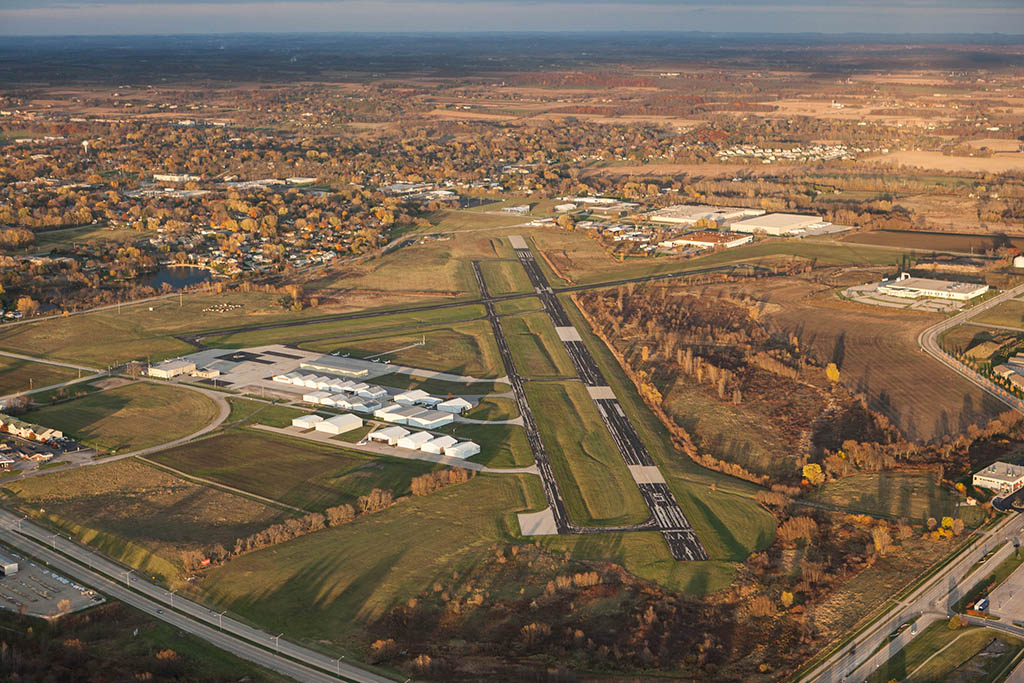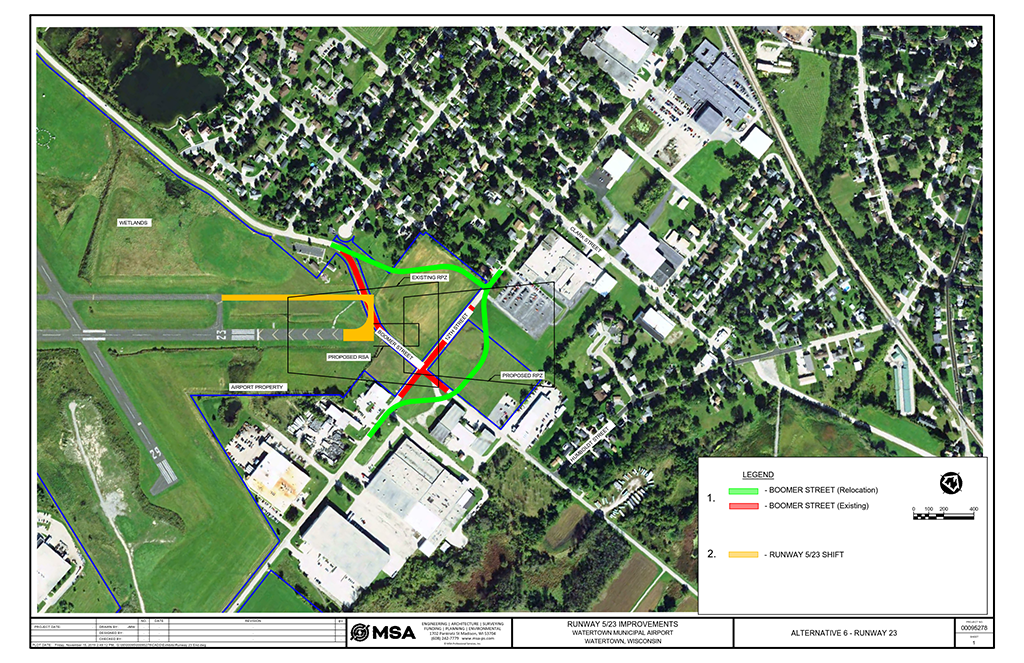The Watertown Municipal Airport (KRYV) is located near the southerly limits of the City of Watertown, almost directly between the larger metropolitan areas of Madison and Milwaukee. The airport is classified by the Wisconsin State Airport System Plan as a Medium General Aviation (GA) Airport and home to the popular Fixed Base Operator (FBO) Wisconsin Aviation, who provides charter services, fuel sales, and aircraft maintenance, service, and sales to residents and guests of southern Wisconsin.
The airport’s most pressing concern is that Runway 5/23, considered its primary runway with a published length of 4,429 feet, is in need of an extension to obtain a published length of 5,000 feet. A runway length of 5,000 feet is a necessity for airports with a relatively high amount of jet aircraft, as this length is seen as critical for jet aircraft performance and insurance liability. Wisconsin Aviation operates multiple jet aircraft as part of their charter services, but cannot currently utilize jet aircraft on the runway at Watertown due to its limited length.

MSA is a trusted airport design and development consultant and has been Watertown Airport’s engineer of record for over 25 years, with some staff members having worked on projects at KRYV for over 30. Past projects include taxiway design, hangar development, ALP updates, runway and taxiway repairs, airfield lighting, and fuel system replacement. Planning for a runway extension began around 2004, and in 2017, MSA published a Master Plan created specifically for the airport to guide its desire to grow, which highlighted the need for the extension.
One key component of the Master Plan document addressed runway length determination and justification. MSA concluded that based on aircraft types and operations — and FAA Advisory Circular 150/5325-4B, Runway Length Requirements for Airport Design — the airport would actually be eligible for a runway length up to 5,400 feet, although physical constraints around the airport only allowed for 5,000 feet, which was the goal. For an extension to 5,000 feet, however, the FAA requires that an airport prove that the critical aircraft group that demands the runway extension have a minimum of 500 documented or projected annual operations in order to gain approval. Concise documentation of arrivals and departures had already been part of KRYV’s operations, but the Master Plan helped more clearly delineate the number of flights that would occur if a 5,000-foot runway had been in place, including an uptick in business class traffic via Wisconsin Aviation.
Currently, MSA is contracted with the Wisconsin Bureau of Aeronautics (WBOA) and the City of Watertown to perform an environmental analysis for the Runway 5/23 extension and corresponding Boomer Street relocation project. MSA is leading the wetland delineation, aircraft noise study, environmental document preparation, Airport Layout Plan (ALP) update, agency coordination, and public outreach efforts, while overseeing an RPZ analysis, Section 106 archaeological and historical research, traffic noise study, and aerial survey to meet the current SOP 2.00 standards for ALP submittals.

MSA’s involvement in the Boomer Street environmental review includes wetland delineation, a noise study and coordination with tribal entities, the DNR, Army Corps of Engineers (ACOE) and general public. Wetlands were avoided to the extent practical for the road relocation project and the noise study, conducted due to the road moving closer to some residential properties, revealed that the effects of the relocation would be negligible for adjacent property owners. Ongoing communication with the airport, WBOA, and the Native American tribes assured that any potential land disturbance has taken all current and historical aspects of the land into consideration.
Timing was critical for this project, and an expedited schedule was developed in order to move the runway expansion along before the pavement deteriorates any further and becomes a safety concern. A 2017 study of the airport pavement showed the Runway 5/23 pavement condition index (PCI) had a score of 60, which is considered “fair” condition. By 2020 — at least one year prior to a possible start of construction — the score on Runway 5/23 had dropped to 42. FAA eligibility criteria dictates a pavement is eligible for rehabilitation or reconstruction at a score of 55 or lower. With a score of 42, the pavement at the Watertown Airport will only continue to deteriorate, making completion of the environmental document for the runway extension before October 1, 2020, a necessity.
The environmental document for the Runway 5/23 extension, paired with a decades-long trusted consulting partnership with MSA, is critical in helping the Watertown Municipal Airport succeed and grow in an ever-competitive aviation world.
